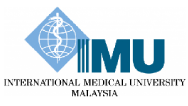Authors: Leela Anthony, Nagarajah Lee, Stephen Ambu, Lokman Hakim S.
ABSTRACT
Background: This study examined the trend of major congenital anomalies (CA) in the state of Penang using the ICD 10 database from 1999 to 2004. The data was collected from various health centres and hospitals. The aim was to study the magnitude of the problem for congenital anomalies in the state of Penang in terms of trends and also to calculate the incidence rate by districts. If a trend was noticed, this in turn will determine whether to carry out further in-depth studies in the future and to find out the linkages to the environment if any.
Methods: This was a retrospective study of congenital anomalies that were registered in the state of Penang and the data was obtained from the ICD10 database from 1999 to 2004. Under ICD 10, congenital anomalies are coded as “Q”. Only major congenital anomalies coded as “Q” from Q1 to Q11 were extracted and analysed. Only new cases were analysed, double and repeat entries were excluded. Trend analysis was than carried out according to districts in Penang.
Results: Incidence rate per 1000 birth was calculated to determine the common congenital anomalies. It was found that there was an increasing trend in the incidence of CA for all the five districts studied; topping the list was Barat Daya while Seberang Perai Selatan had the lowest incidence rate. It is noteworthy to mention that Barat Daya is an industrialised district while Seberang Perai Selatan is mainly an agricultural and residential area. This preliminary study however did not look into the reasons or causative factors for the high or low incidence in the respective districts. In terms of the types of congenital anomalies, the highest was that from malformation of circulatory system while the lowest from respiratory system. The congenital anomalies with the incidence rate at least 3 per 1000 births were malformations from the nervous system, circulatory system, digestive system, genital organs, malformation/ deformation of musculoskeletal system and cleft lip and cleft palate.
Conclusion: This study showed a rising trend in congenital anomalies in all districts in the state of Penang and a high incidence was observed in the district of Barat Daya, where a number of factories are located in the Bayan Lepas Industrial Zone. However further studies need to be carried out to determine the causative factors and their linkage to the environment. The limitation of this study was that the data analysed was only from notified cases to the Penang State Health Department.
Keywords: Trend, ICD, Congenital, Anomalies, Environment.
Citation: IeJSME 2013 7(2): 33-40
DOI: https://doi.org/10.56026/imu.7.2.33

